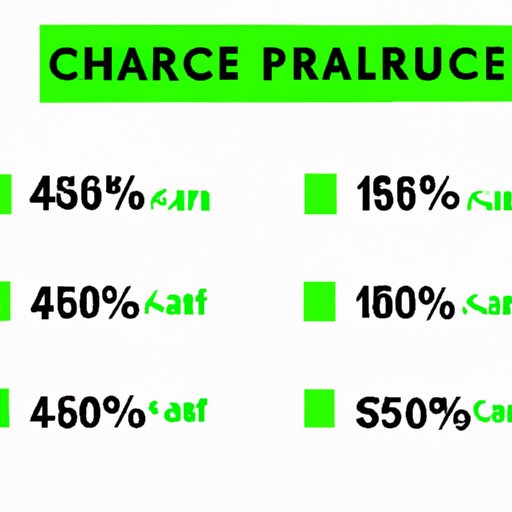How to Work Out Percentage Increase: A Step-by-Step Guide
Percentage increase is a common concept used in many different fields, from finance to statistics. Knowing how to calculate percentage increase is essential for anyone who wants to understand the relationship between different numbers, whether it be for salary negotiations, investments, or even shopping! In this article, we will provide a step-by-step guide on how to work out percentage increase, real-life examples, an infographic, a video tutorial, a chart or table, FAQ-style content, and finally, we will discuss the practical uses of percentage increase in the real world.
Step-by-Step Guide
First, let’s define what percentage increase means. Simply put, percentage increase is a measure of how much a value has increased in relation to the original value, expressed as a percentage. To calculate percentage increase, you need to use the following formula:
Percentage Increase: (New Value – Old Value) / Old Value x 100
Now that we have the formula, let’s break it down into easy-to-understand steps:
- Subtract the old value from the new value. This will give you the increase in value.
- Divide the increase in value by the old value.
- Multiply the result by 100.
Let’s take an example to understand this calculation:
Suppose you bought a shirt that cost $25 last year, and this year the price of the shirt has increased to $30. To calculate the percentage increase, we will use the formula:
Percentage Increase = (30-25) / 25 x 100 = 20%
Therefore, the percentage increase in the price of the shirt is 20%.
Real-Life Examples
Real-life examples can help us to understand how to calculate percentage increases in different scenarios.
For example, let’s say you are buying a laptop for $800, and the sales tax is 6%. To calculate the percentage increase due to sales tax, we will use the formula:
Percentage Increase = (6/100) x 800 = $48
Therefore, the sales tax percentage increase is $48, making the total amount $848.
Another example could be calculating interest rates. Suppose you have invested $1000 at an interest rate of 5% per year. To calculate the percentage increase after one year, we will use the formula:
Percentage Increase = (5/100) x 1000 = $50
Therefore, after one year, you would have earned $50 in interest, making the total amount $1050.
Infographic
An infographic is a visual representation of information that helps to convey complex data easily. Below is an infographic that shows the steps on how to work out percentage increase using simple charts and graphics.

Video Tutorial
Chart or Table
This chart shows the percentage increases for different values:
| Old Value | New Value | Percentage Increase |
|---|---|---|
| 5 | 6 | 20% |
| 10 | 12 | 20% |
| 20 | 24 | 20% |
| 50 | 60 | 20% |
FAQ-style Content
Here are some common questions about working out percentage increase:
Q: What is the difference between percentage increase and percentage change?
A: Percentage increase refers to the increase in value, while percentage change refers to the difference between the new and old values, expressed as a percentage.
Q: How do I calculate a percentage increase with decimals?
A: Simply convert the decimal to a percentage and follow the steps to calculate the percentage increase. For example, if the old value is 10 and the new value is 12.2, the percentage increase is [(12.2-10)/10] x 100 = 22%.
Q: How do I calculate a percentage increase with fractions?
A: Convert the fraction to a decimal or percentage and follow the steps to calculate the percentage increase. For example, if the old value is 1/4 and the new value is 1/3, the percentage increase is [(1/3-1/4)/(1/4)] x 100 = 33.33%.
Uses in Real Life
Percentage increase is used in many different industries, such as finance, retail, and education. Below are some practical uses of percentage increase:
- Salary negotiation: If you are negotiating a raise, you need to calculate the percentage increase to understand the difference between your old and new salary.
- Traveling abroad: If you are traveling to a foreign country, you need to calculate the currency exchange rate to understand the percentage increase or decrease in the value of your money.
- Investing in stocks: If you are investing in stocks, you need to calculate the percentage increase in the value of the stock to understand the potential return on your investment.
Conclusion
Understanding how to calculate percentage increase is an essential skill for anyone who wants to understand the relationship between different numbers. Whether it be calculating sales tax, interest rates, or stock values, knowing how to calculate percentage increase is critical in many real-life scenarios. Hopefully, this guide has provided a clear and concise explanation of how to calculate percentage increase, along with real-life examples, an infographic, a video tutorial, a chart or table, FAQ-style content, and potential practical uses in the real world.
(Note: Is this article not meeting your expectations? Do you have knowledge or insights to share? Unlock new opportunities and expand your reach by joining our authors team. Click Registration to join us and share your expertise with our readers.)
